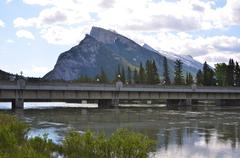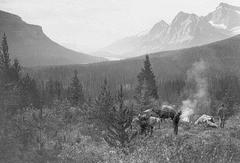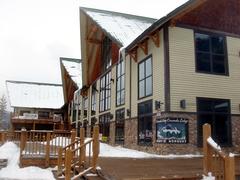Visiting Sulphur Mountain Cosmic Ray Station National Historic Site in Banff, Canada - A Complete Guide
Publish Date: 23/07/2024
Introduction to Sulphur Mountain Cosmic Ray Station
Nestled in the picturesque Banff National Park in Alberta, Canada, the Sulphur Mountain Cosmic Ray Station National Historic Site stands as a significant monument to scientific achievement and natural splendor. Established in 1956, this facility played a crucial role in the global study of cosmic rays, earning its place in history during the International Geophysical Year of 1957-1958. The research conducted here has profoundly contributed to our understanding of solar activity, cosmic radiation, and the Earth’s magnetic field. Visitors today can explore this unique blend of science and natural beauty, making it an enriching experience for history buffs, science enthusiasts, and nature lovers alike. This comprehensive guide will cover everything you need to know about visiting the site, including historical insights, visitor information, travel tips, nearby attractions, and more. Whether you choose to hike up Sulphur Mountain or take the Banff Gondola, your journey promises to be both educational and awe-inspiring. For more details on the significance of the Sulphur Mountain Cosmic Ray Station, you can visit the Banff National Park website.
Contents Overview
- Introduction
- History of the Sulphur Mountain Cosmic Ray Station
- Establishment and Early Years
- Role in the International Geophysical Year
- Technological Advancements and Research Contributions
- Decline and Closure
- Designation as a National Historic Site
- Visitor Information
- Hours and Tickets
- Travel Tips and Accessibility
- Nearby Attractions
- Educational Programs and Events
- FAQ
- Conclusion
History of the Sulphur Mountain Cosmic Ray Station National Historic Site
Establishment and Early Years
The Sulphur Mountain Cosmic Ray Station, situated at an altitude of 2,283 meters (7,490 feet), was founded in 1956 to study cosmic rays with minimal atmospheric interference. Its prime location on Sulphur Mountain allowed scientists to gather clearer data on these high-energy particles from outer space.
Role in the International Geophysical Year
During the International Geophysical Year (IGY) from 1957 to 1958, the station played a crucial role in global geophysical research. The Sulphur Mountain station was one of several key observatories contributing valuable data on cosmic rays, enhancing our understanding of their behavior and interaction with the Earth’s atmosphere.
Technological Advancements and Research Contributions
Equipped with state-of-the-art technology, including neutron monitors, the station measured cosmic ray intensity and variations with high precision. Significant findings included the correlation between cosmic ray intensity and solar activity, known as the Forbush decrease, which provided insights into the influence of solar wind on cosmic ray propagation.
Decline and Closure
Despite its significant contributions, the station faced challenges due to technological advancements and the establishment of more sophisticated observatories. Harsh environmental conditions and logistical difficulties also contributed to its decline. In 1978, after over two decades of operation, the station was officially closed.
Designation as a National Historic Site
In 1982, the Sulphur Mountain Cosmic Ray Station was designated as a National Historic Site, recognizing its historical and scientific significance. This designation ensures the preservation of its legacy in cosmic ray research and Canadian science history.
Visitor Information
Hours and Tickets
The Sulphur Mountain Cosmic Ray Station can be accessed via the Banff Gondola, which operates daily from 9:00 AM to 10:00 PM. Ticket prices for the gondola ride are as follows:
- Adults (16+): $62
- Children (6-15): $31
- Children under 6: Free
Travel Tips and Accessibility
- Weather Preparation: Be prepared for changing weather conditions. Bring layers, water, and snacks.
- Hiking: For a more immersive experience, take the Sulphur Mountain Trail. It’s a 5.5-kilometer (3.4 miles) hike with an elevation gain of 655 meters (2,149 feet).
- Accessibility: The Banff Gondola and summit facilities are wheelchair accessible. However, the hiking trail is not suitable for wheelchairs or strollers. For more information on accessibility, visit the Banff Gondola accessibility page.
Nearby Attractions
- Banff Upper Hot Springs: Relax in these natural hot springs after your visit.
- Banff Park Museum: Explore the diverse natural history of the region.
- Whyte Museum of the Canadian Rockies: Discover the cultural heritage and history of the Rockies.
Educational Programs and Events
The site hosts educational programs, guided tours, and special events to engage visitors with its historical significance. These activities often include lectures and interactive displays, celebrating the scientific achievements of the station.
FAQ
What are the visiting hours for Sulphur Mountain Cosmic Ray Station?
- The site is accessible via the Banff Gondola, which operates daily from 9:00 AM to 10:00 PM.
How much are tickets for Sulphur Mountain Cosmic Ray Station?
- Gondola ticket prices are $62 for adults, $31 for children aged 6-15, and free for children under 6.
Are guided tours available?
- Yes, guided tours are available and highly recommended. These tours are led by knowledgeable guides and are offered at scheduled times throughout the day. Check the Parks Canada website for tour schedules.
What other attractions are nearby?
- Nearby attractions within Banff National Park include the Banff Upper Hot Springs, the Banff Park Museum, Lake Minnewanka, and the historic Banff Springs Hotel.
Is the site accessible?
- Yes, the Banff Gondola and Sulphur Mountain Cosmic Ray Station are wheelchair accessible, with ramps and elevators available to accommodate visitors with mobility challenges.
Conclusion
The Sulphur Mountain Cosmic Ray Station National Historic Site offers a fascinating journey into the history of cosmic ray research set against the stunning backdrop of Banff National Park. Its designation as a National Historic Site ensures that future generations can appreciate the site’s significant scientific contributions. Plan your visit today to immerse yourself in this unique blend of science and nature.
For more information, download the mobile app Audiala, check out related posts, or follow us on social media for updates on special events and programs.
Cited Sources and Further Reading
- Visiting the Sulphur Mountain Cosmic Ray Station - Hours, Tickets, and Historical Insights, 2023 Banff National Park
- Significance of Sulphur Mountain Cosmic Ray Station National Historic Site, 2023 Parks Canada



